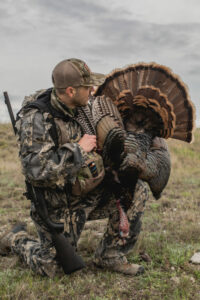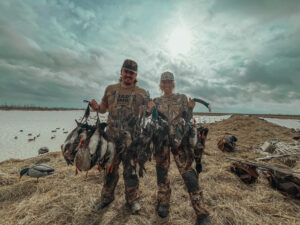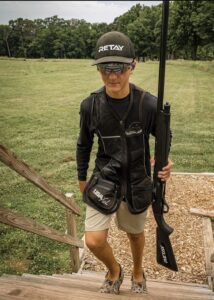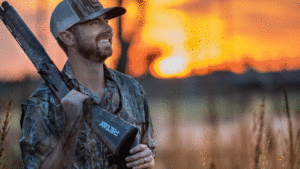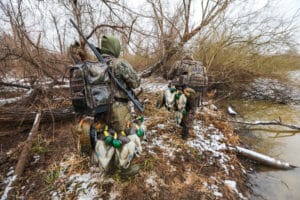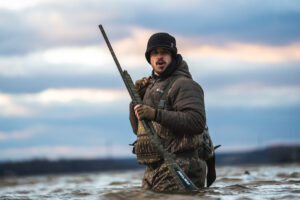
By: Bill Grabinski

Rumor has it a day of scouting is as good as a day of hunting.
If that statement isn’t entirely true, it’s pretty darn close. But let’s face it – the turkey hunting community has been taken over by the love of instant gratification as much as anything. You can’t go anywhere without seeing hunters talking about rolling into an area they’ve never been to, striking a bird, and moving on to the next state when that tag is filled.
But for every hunter fortunate enough to find a gobbler that throws caution to the wind, there’s a lot more going home empty-handed wishing they’d known more about the area and birds they were hunting.
As short as spring turkey season is, there’s a pile of info you can gather year-round to stack the odds in your favor. We’re going to uncover the best turkey scouting tips for the spring season – and cover some of the topics rarely talked about.
With as much strategy and decision-making that goes into a hunt, the habits of the bird itself are often lost in a sea of other thoughts – when and how to call, where other hunters might be, decoy placement…the list goes on.
Done right and scouting can be bridge the gap between merely hunting turkeys and being a turkey hunter.
But like anything in life, you’ve gotta crawl before you can walk…so let’s first address the scouting basics everyone needs to know.

Digital Scouting
This wouldn’t be complete without bringing up technology. The fact is we live in the 21st century and our first look at a property is usually through an app like Spartan Forge. Though nothing compares to seeing things for yourself firsthand, assessing the land through your phone or computer can be a huge timesaver.
But there’s way more you can do than simply figuring out where property lines, creeks, and fields are located.
While most people get tunnel vision and zoom in on the land they’re able to hunt, don’t hesitate to look at the landscape through a bigger lens. This means seeing what neighboring properties have to offer turkeys in combination with where you can hunt. You’ll get an idea of when and how turkeys use the land – you’re trying to figure out how much they need to travel to get everything they need. Whether you’re hunting timbered mountains or flat bottomland, turkeys everywhere have the same basic needs.
And since we’ve mentioned mountains, there’s no better time to learn how to read topography lines if you’re unfamiliar. Having the ability to determine the steepness of terrain isn’t just useful, it’s essential. And make no mistake, the birds know how to use the terrain to their advantage…this might mean pitching off a roost location on top of a bluff to coast down to a field or simply using high points to gobble up hens mid-morning.
Ultimately, you want to use this info so you can be more efficient with your time when you finally set foot on the property.
Finding Turkey Sign
We can’t talk about scouting without mentioning sign – this means tracks, scratching, droppings, dusting areas, or even marks from a longbeard dragging his wings while strutting.
But take it with a grain of salt.
First, turkeys don’t always leave a ton of sign, so you can’t necessarily count out an area just because you haven’t found much. Second, the time of year plays a huge role in how much value to place on sign.
If it’s winter or fall and you’re simply confirming an area holds birds, finding sign is a great starting point. Just remember turkey behavior patterns during the spring season are subject to change. Turkeys move throughout the year based on a seemingly infinite amount of factors – food availability, flock dynamics, disturbance, weather, and more.
Likewise, finding a couple ridgetops or hardwood bottoms littered with scratching and droppings doesn’t necessarily mean they’ll be there next spring. But it’s certainly a possibility. On the flip side, if it’s a week before the season opens and you find a bunch of gobbler tracks and strut marks on a field edge, that could be your ticket to a perfect opening morning.
It all depends on understanding turkeys and predicting how they’ll relate to the landscape when the season opens.
Rule The Roost
Locating roosting sites for spring turkey hunting is arguably the biggest piece of homework for every hunter.
Now here’s a deadly scouting and hunting tactic rolled into one. Say you’ve got a classic scenario where you hear a couple birds gobbling along a creek bottom in early spring. Take a hike in later in the day and scour the area where those birds were roosted. You’ll often find a handful of roost trees in close proximity.
These are typically large trees with big flat limbs that jut out horizontally. If you can imagine a gobbler walking around on a limb gobbling, strutting, and drumming as daylight approaches, you may have found a goldmine.
This is the perfect situation to find the best route to access an area undetected. Few approaches are as effective as sneaking in before daylight and setting up right where a longbeard will fly down. And it’s one of those phenomenal spring turkey hunting tactics for beginners and seasoned veterans alike.
Finding The Food
Don’t get me wrong – finding food is important when it comes to hunting anything, but it’s not always a key factor when it comes to spring turkey hunting. The truth is a turkey is about as bad as a labrador retriever – they’ll eat just about anything. You’ll rarely hear about turkeys starving to death..they know how to find food and they aren’t picky.
But there are times when food sources make a huge difference. Time of season often determines how concentrated turkeys will be on a particular food source. If you’re in one of the Northern states where opening day means snow and cold, you can count on turkeys being grouped up close to concentrated food sources. This could mean waste grain, old acorns, or creek bottoms that get the first green shoots popping up each year.
As spring progresses, food typically becomes less of a factor as bugs hatch and more plants green up. Again, take what you know, be ready to adapt, and try to predict the changes that will occur throughout the season.

Scout With Your Ears
There’s nothing like spending time covering ground, finding sign, and figuring out how you’re gonna close the distance on a cagey old longbeard. But make no mistake, this is an audio driven game and your ears tell you almost everything you need to know.
And there’s more to it than confirming birds are using a certain area. If you’ve got the time, wait and listen well after the birds fly down from the roost. This could mean listening from different angles or moving in closer. And if you’re short on time, spring turkey scouting using trail cameras is an effective way to gain info when you’re not there.
You want to figure out where those birds are going after fly down. Though this can change from day-to-day, you’ll gain intel on places they’re comfortable going. In the early parts of spring, this usually means sticking with hens close to where they roosted. Or a quick walk to a nearby field or ridgetop to gobble.
Either way, they’ll tell you where you need to be.
And don’t worry if they stop gobbling after fly down. This doesn’t mean they went to the next county. In most cases, they’re strutting with hens in the last place you heard them. You might even hear a bird move to higher ground or an opening and begin gobbling again. You’ll want to note the route he took and where he ended up. Chances are he’s got a spot where he knows he can gobble up more hens. And you can bet he’ll revisit those places as spring progresses.
If you can’t envision cool spring mornings and gobbles ripping across the landscape at this point, you’re at the wrong place. But the journey has just begun…next time we’re going to put it all together to close the gaps and give you the best chance at filling a tag.
Stay tuned.

